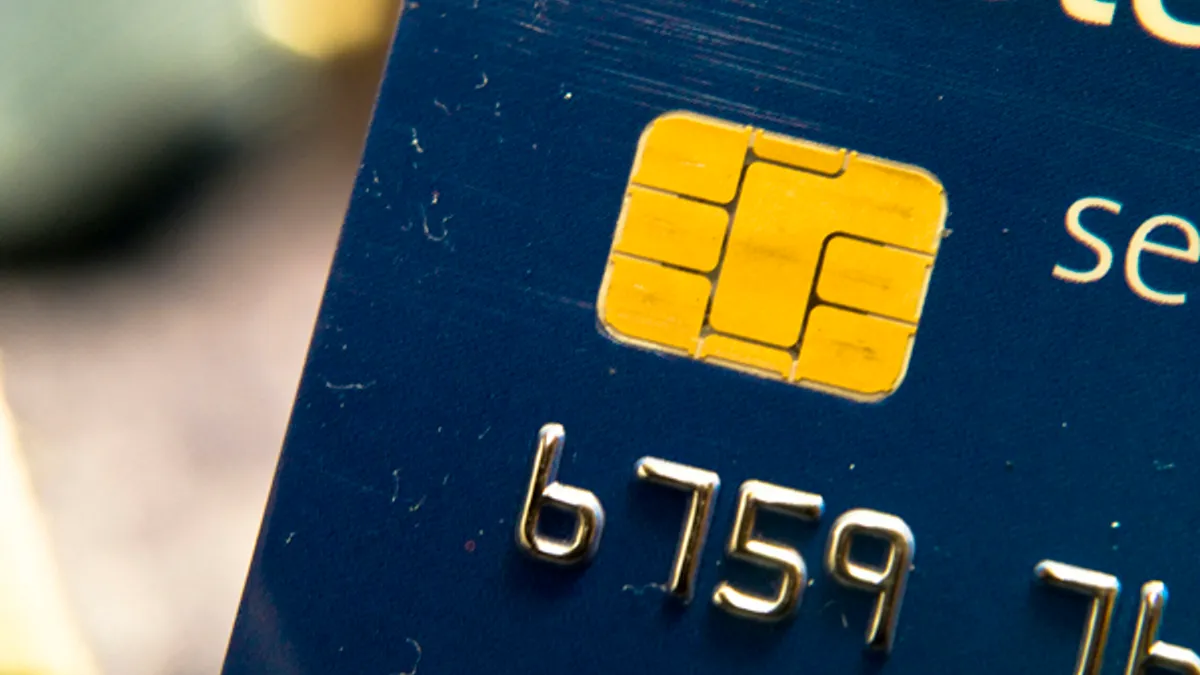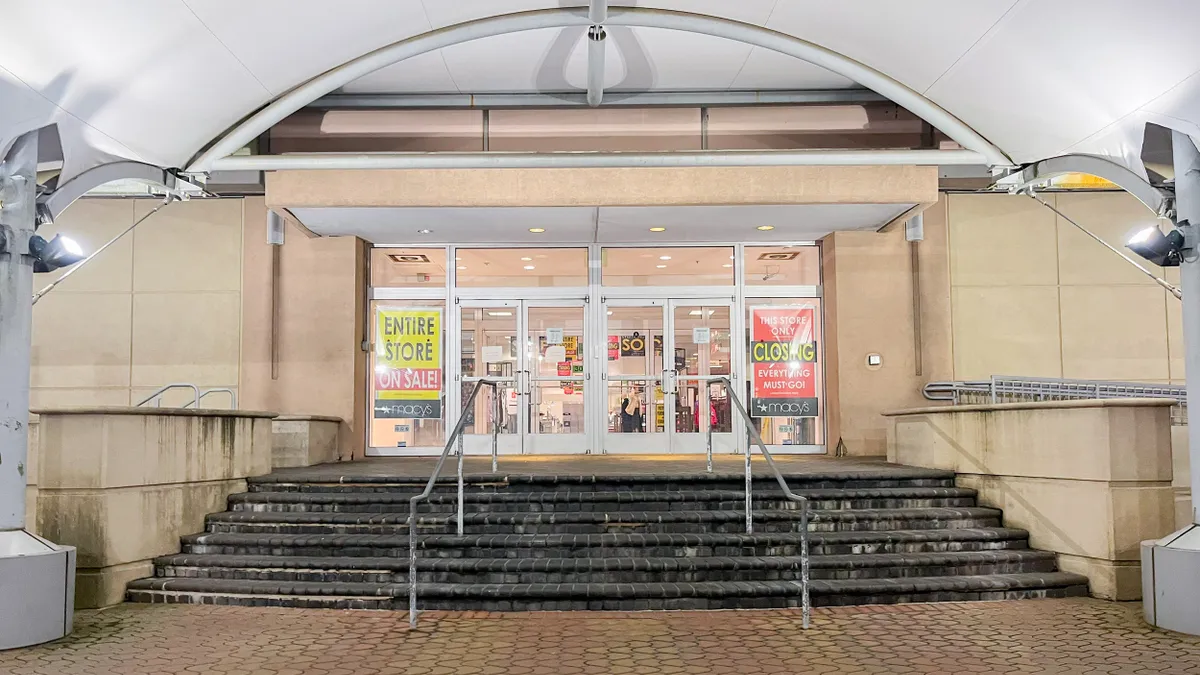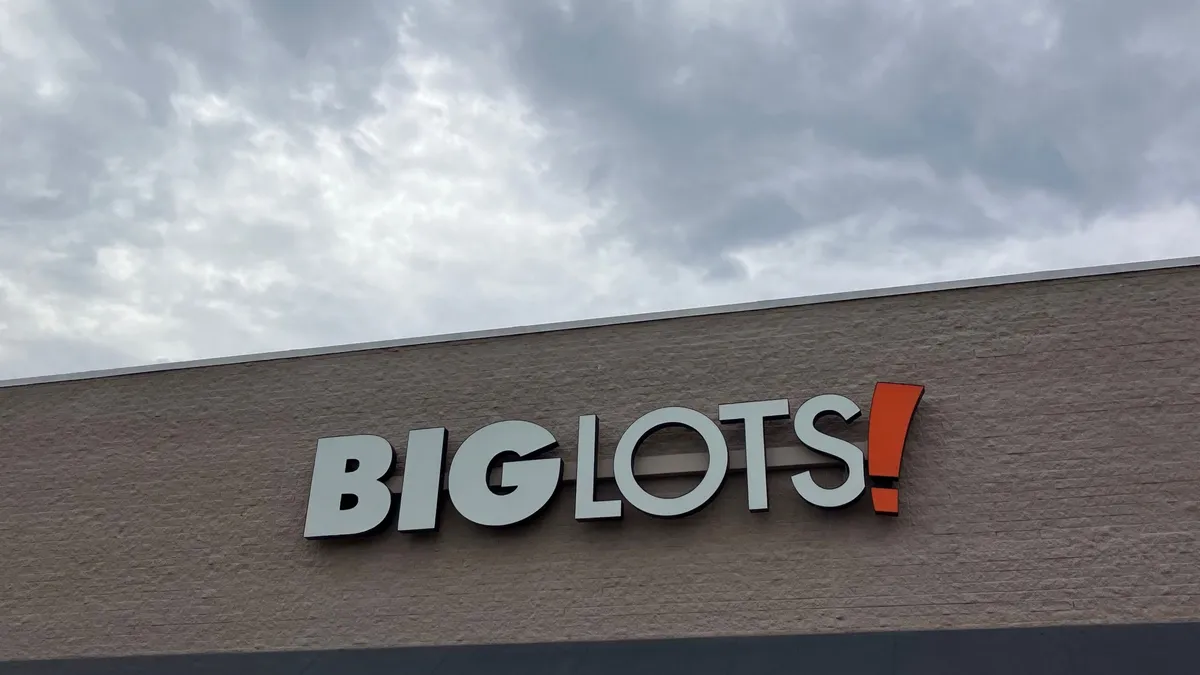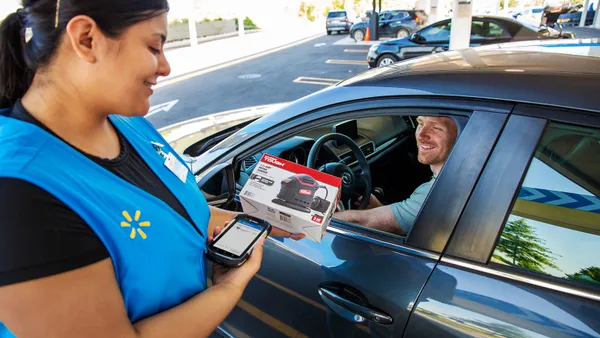Dive Brief:
-
Just 58% of the retailers surveyed by technology solutions company Randstad Technologies are on their way to meet the Oct. 1 deadline to be able to accept new chip-enabled credit cards, but 42% said they either did not have plans to make the deadline or weren’t aware of plans to do so. As of Thursday, retailers without systems that can take EMV cards are liable for any losses stemming from such breaches, rather than banks.
-
But many banks have failed to get those more secure cards into consumers’ wallets, according to research released Wednesday from CreditCard.com. Just 40% of consumers, mostly in higher income brackets, have received the cards, the survey found.
-
Point-of-sale equipment at gas stations aren't required to be ready for the cards until Oct. 1 2017, and ATM machines, most of them run by banks themselves, don’t have to be ready until next year.
Dive Insight:
It looks like Oct. 1 is going to come and go with many retailers and consumers alike unprepared for the shift to EMV cards.
More consumers (40%) have the cards than in January, when barely a third (31%) did, according to Creditcards.com, leaving the great majority without them.
And retailers of all sizes have encountered a variety of challenges in meeting the deadline, according to Dick Mitchell, solutions director at Randstad Technologies, which helps retailers with tech personnel and technology updates, including for the new EMV card readers.
It’s not just smaller retailers finding the deadline a challenge, according to Mitchell. Retailers of all sizes have been scrambling to get the equipment and software required to read new EMV chip-enabled cards, designed to stem data breaches made easy by magnetic-stripe cards and the systems that read them. Demand for equipment and a relatively short amount of time to get it into stores, compared to the conversions in Europe and Canada, for example, have made it a tough job, Mitchell told Retail Dive.
“There are a number of larger retailers, including public companies, that are not going to be ready for this because they’re not prepared,” Mitchell says. “They are aware of it and not going to get there. I do think the larger entities that have a large presence are the ones that do tend to be ready.”
In some cases, smaller retailers, though, will find it easier because they have fewer stores to think about.
“We’re going to see the mag strips on our cards for a while,” Mitchell says. “If we have 50% of retailers ready on Thursday I’d be surprised.”
Many retailers are ready to go, and some have been for a while. Target has had its point-of-sales system EMV-ready for months now, and its software, unlike many others, won’t accept the magnetic-stripe payment from an EMV chip-enable card, forcing the shopper to opt for the more secure payment.
“That’s a really good way to make this push into the side of EMV,” Mitchell says. “I’d like to see more of that.”
Target’s extra care is understandable, he says, considering their massive breach two years ago. Wal-Mart, meanwhile, has had EMV systems in place for a year at its Wal-Mart and Sam’s Club stores.

















